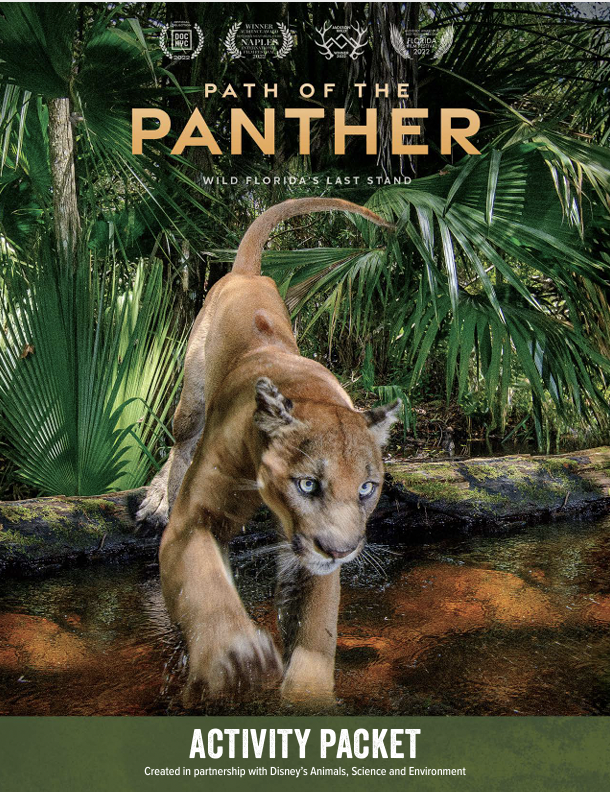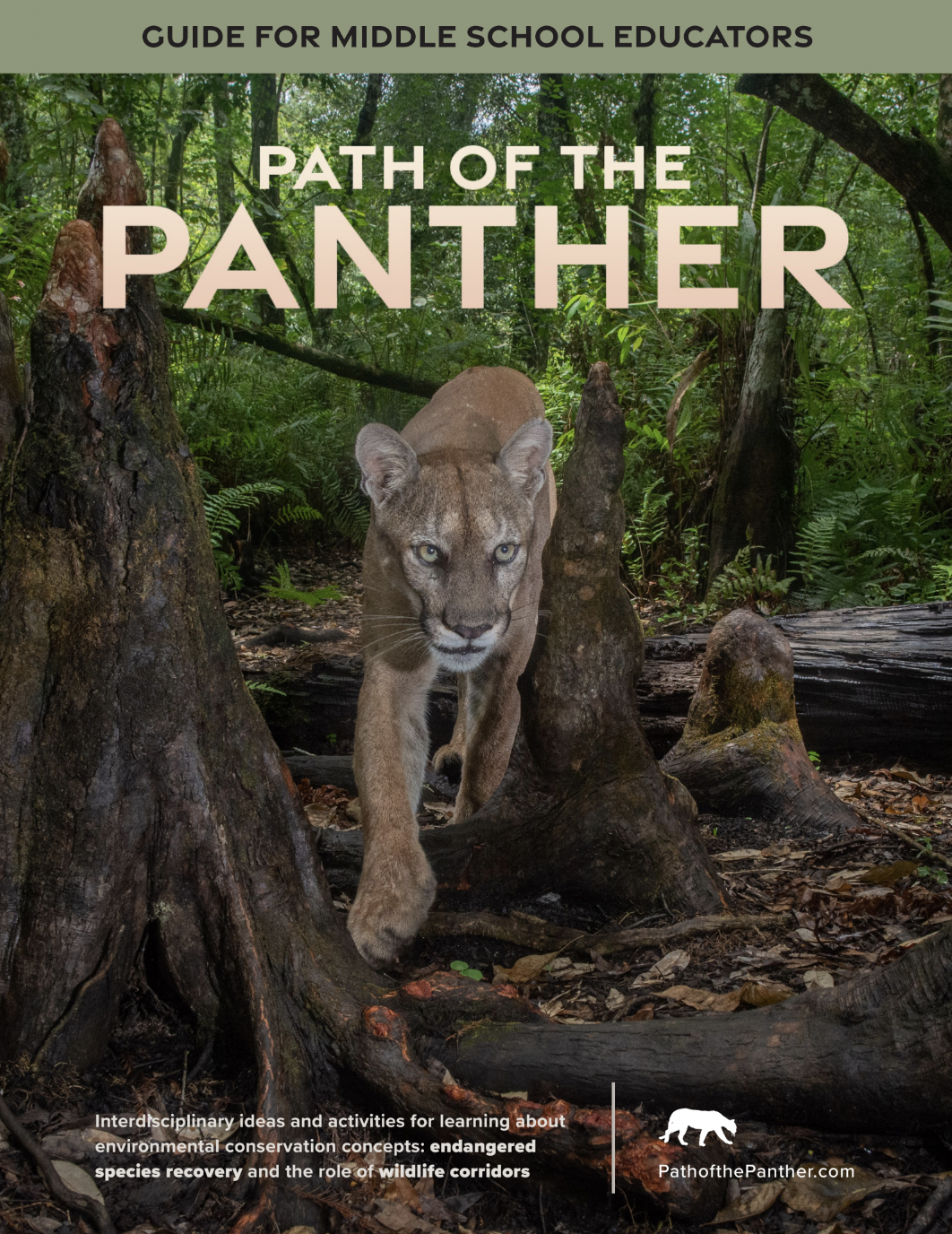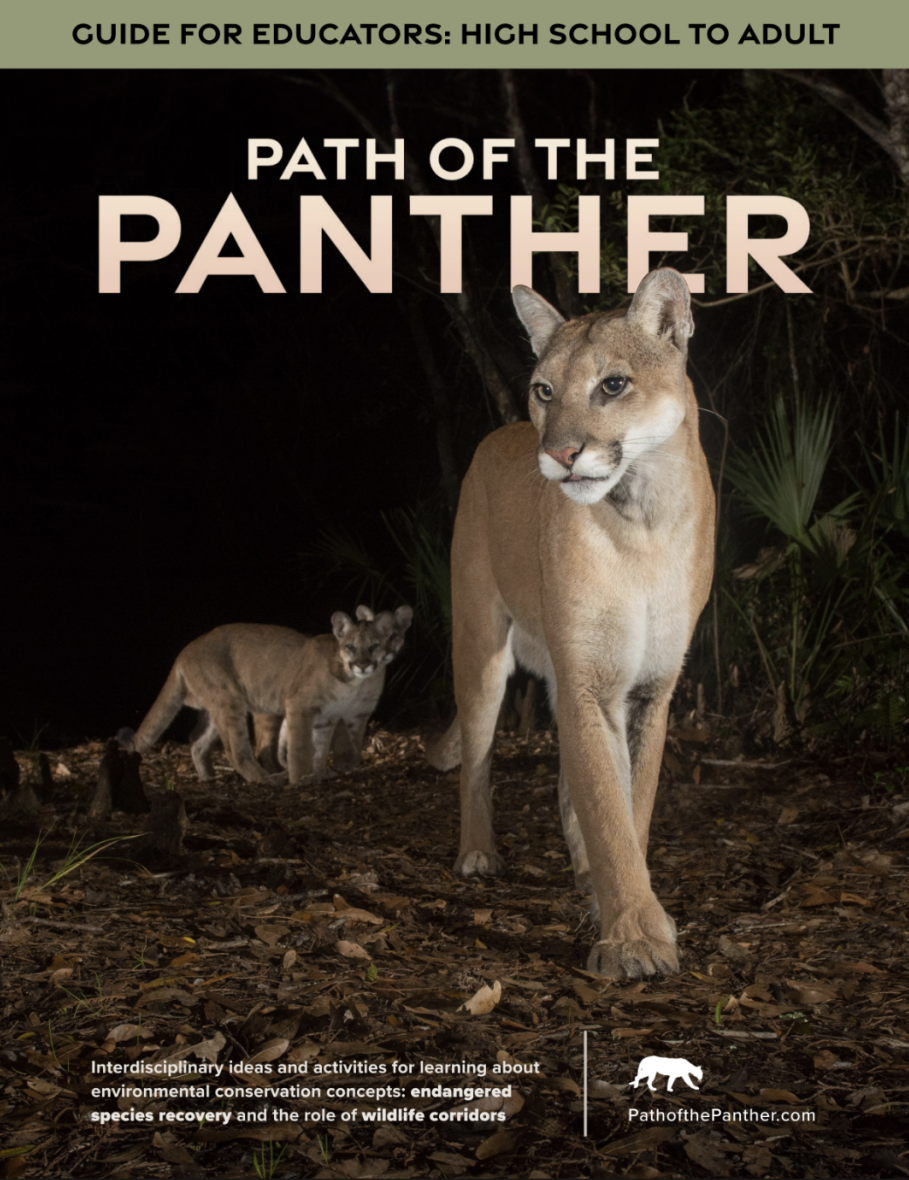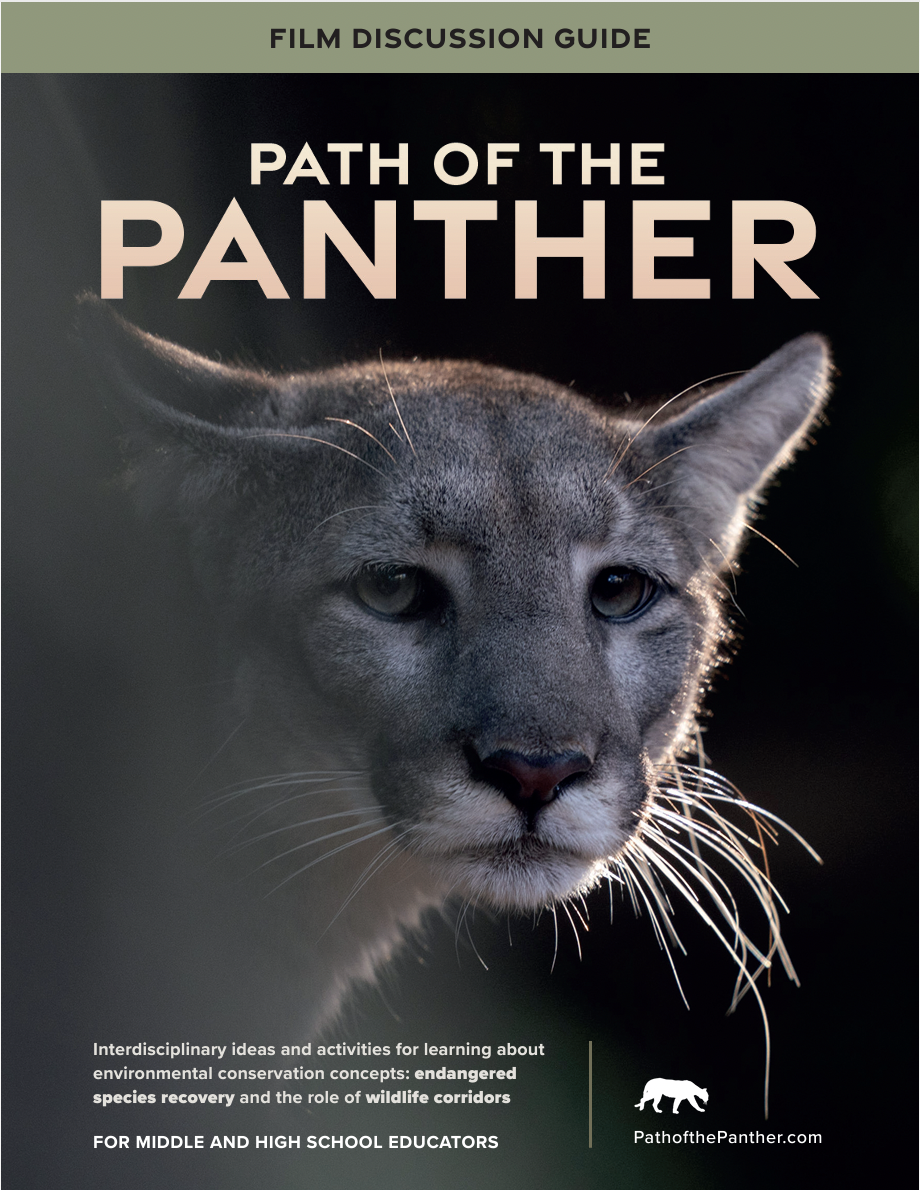FOR EDUCATORS
Path of the Panther has created a collection of resources for educators to provide students of all ages with learning opportunities connected to the film. Educators from across Florida convened in the Disney Wilderness Preserve in September 2023 to plan the interdisciplinary activities found in the various curriculum guides.
While the activities include multidisciplinary connections and are globally applicable, they are designed to address Florida science and national science (NGSS) standards. They are enriched with connections across subjects including social studies, geography, English language arts, math/data literacy, technology, engineering, and art. Adaptable for both formal and informal settings, educators can use these activities as a unit or as individual, stand-alone activities.
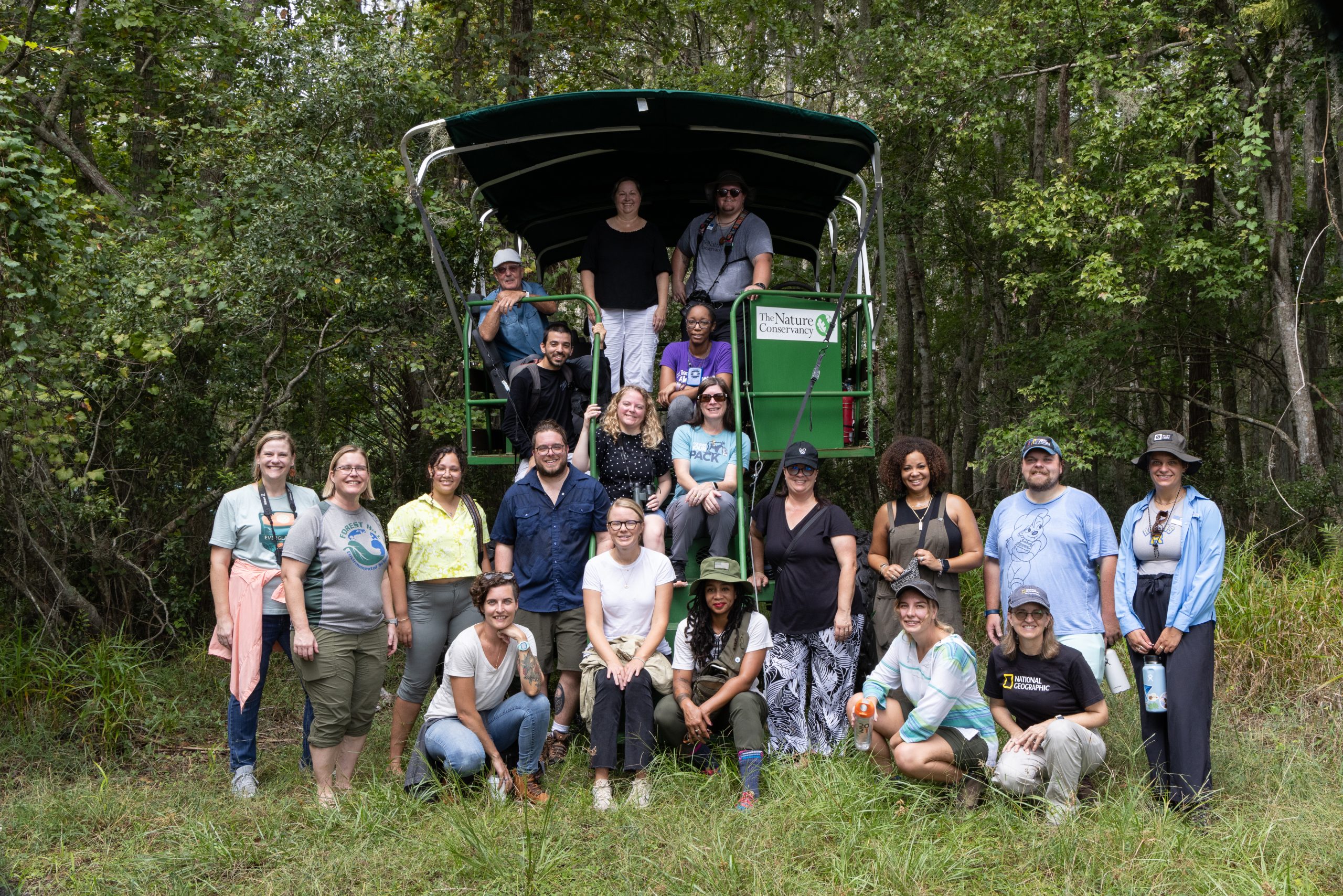
YOUTH
MIDDLE SCHOOL
HIGH SCHOOL TO ADULT
DISCUSSION GUIDE
THE FLORIDA PANTHER
The last big cat surviving in the eastern United States
The Florida panther is more than just an icon for Florida’s last wild places. It is a conservation keystone. The panther is an umbrella species with the largest terrestrial home range in the state, protecting dozens of other species in its domain. Reaching near extinction in the 1950’s, the Florida panther was among the first to be added to the U.S. Endangered Species list in 1973. The population has rebounded from about 30 adults to nearly 200 today. But the species faces a multitude of new challenges.
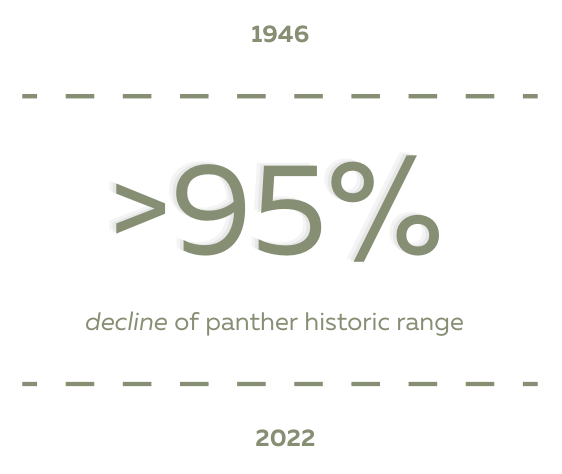
THE PROBLEM
Urban sprawl is projected to consume 5 million acres of habitat by 2070
Florida’s population grows by 1,000 people per day. That equates to one million people every three years. Catering to this rapid growth, new developments are built where wildlife habitat once existed. This results in islands of habitat and wildlife populations separated by roads and suburbs.
Motor vehicle collisions are the leading cause of death for Florida panthers. Nearly 30 individuals are killed every year.
THE PATH TO RECOVERY
The future depends on the Florida Wildlife Corridor
In order to recover from its endangered species status, scientists estimate there needs to be three populations of more than 240 breeding Florida panthers. This is only feasible with sufficient connected habitat. The survival of the Florida panther depends on the protection of a network of statewide public and private lands, known as the Florida Wildlife Corridor. This network of land gives the panther hope for rebounding its population and recovering some of its historic range.
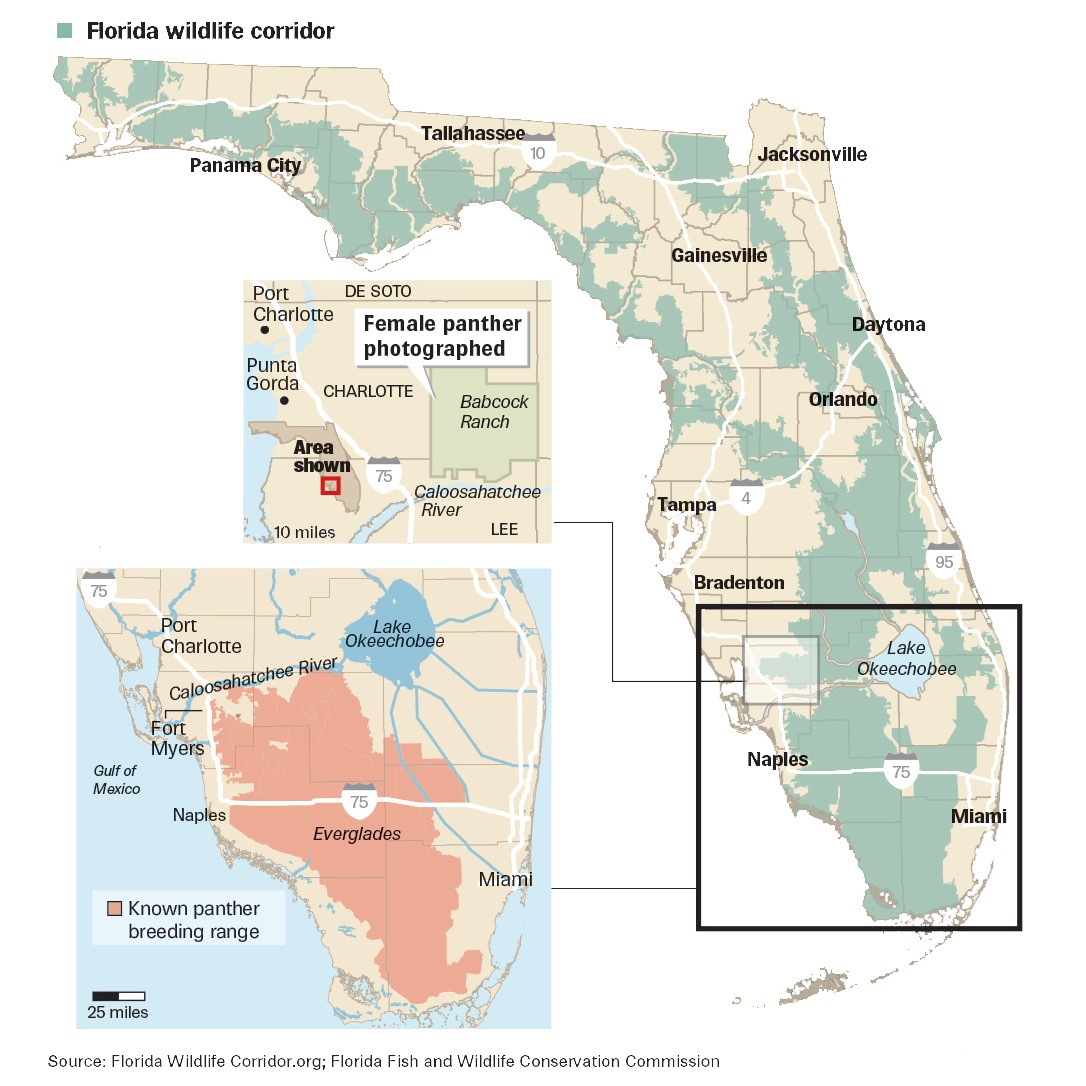
A NEW HOPE
The Florida panther is the only cat currently expanding its range
In 1973, the same year the Florida panther was added to the U.S. Endangered Species List, was when the last female panther was documented north of the Caloosahatchee River. It wasn’t until November of 2016 when another female was documented, indicating both potential breeding behavior and the species expanding its range.

IT’S UP TO US
By protecting the land they need to survive, we can protect the panther
In June of 2021, the Florida Wildlife Corridor Act was signed into law with unanimous bipartisan support. The legislation formally defined the Florida Wildlife Corridor and since inspired more than $800 million in public investment to help protect the state’s vast network of public and private lands which support both wildlife and people. Investing in rural land conservation will keep the Corridor connected,steer new development closer to existing urban cores, and secure a future for the Florida panther.
LEARN MORE ABOUT THE FLORIDA PANTHER
Helpful resources to learn about the panther and support their recovery
FWC Florida Panther Recovery Plan

